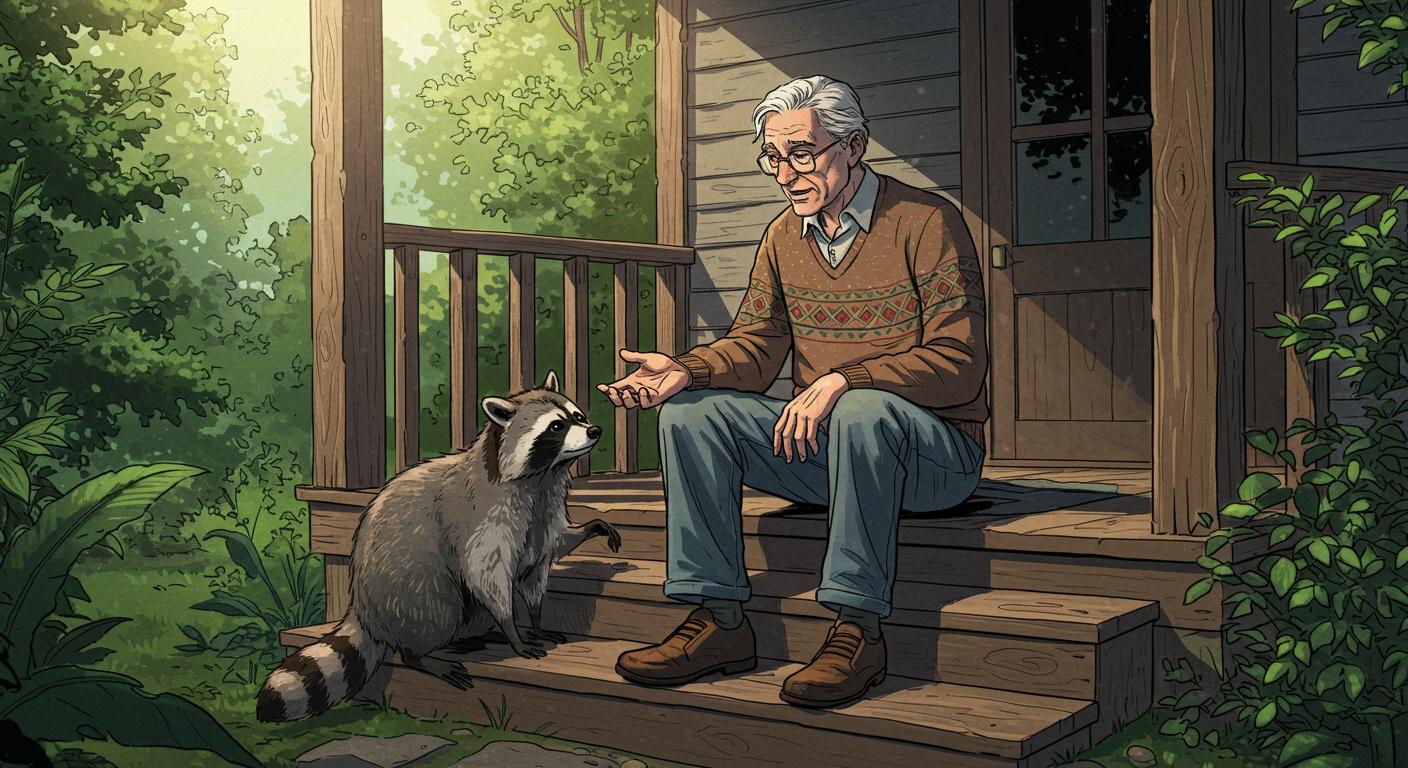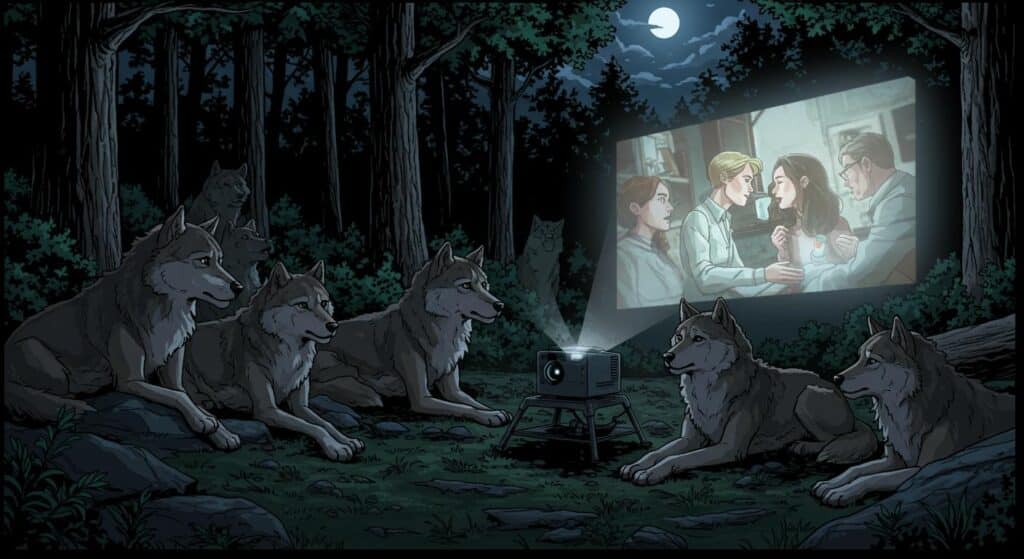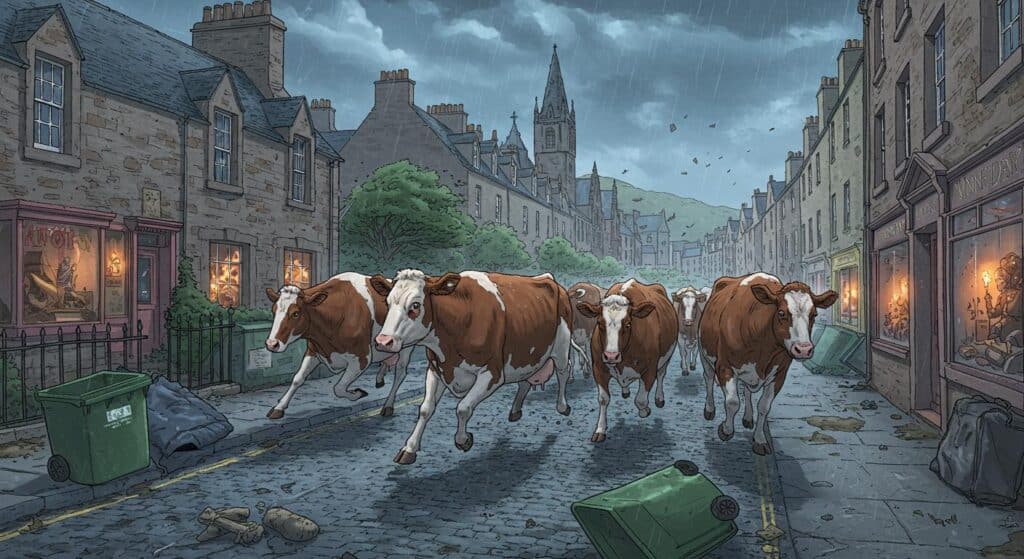Woodbury, Connecticut has quietly played host to a story that sounds like it wandered out of a nature documentary and into suburbia. An 82-year-old gentleman named Dick Clark—no, not that one—has developed a rather endearing relationship with a local raccoon, as WJAR via CNN Newsource documents. For over a year, Clark’s front porch has doubled as a nightly rendezvous site for this unexpected visitor and, occasionally, her family, with their meetings dutifully captured on a security camera his children installed for far more conventional reasons.
Of Cigar Smoke, Marshmallows, and Measured Boundaries
It all starts with a routine: Clark, a cigar in hand, sitting on his porch. The raccoon’s initial approach wasn’t skittish or hurried, according to what Clark shared with WJAR. She simply “strutted up,” held his gaze, and decided—for whatever reasons motivate a raccoon—that this octogenarian belonged in her orbit. From that first encounter, the visits became regular. It’s a narrative sprinkled with the sort of charm usually reserved for children’s books, yet grounded in adult wariness.
A few weeks in, as WJAR notes, Clark found himself introduced to not just one raccoon, but an entire family. The mother, confident enough after a bonding period, brought along her five babies for a porch-side meet-and-greet. Clark’s account of acting as a “raccoon whisperer” is delivered without theatrics and with a kind of matter-of-fact delight that doesn’t seem to ask for applause. Yet, the habitual nature of the evening visits can’t help but raise a smile—especially once it’s revealed that influence went both ways: this past spring, after hibernation, one of the babies showed up alone, apparently remembering the human connection.
Feeding wildlife isn’t a practice he takes lightly. WJAR points out Clark’s precautions: he feeds grapes and marshmallows—but always with a glove, and ever-alert to the risks. “I don’t need to use the glove, but I’d rather be safe than sorry,” he conveys. Observing boundaries is clearly part of the arrangement; he describes allowing the raccoon onto his lap after a few weeks, stoppering any closer advances. He keeps a cautious eye out for signs of rabies or illness, ever mindful that, adorable as they may be, raccoons are not pets. The outlet also notes that Clark’s adherence to hand-washing and vigilant observation form the backbone of his continued porch hospitality.
The Waiting Game and Porchside Therapy
Nightly, between the hours of 7 and 11, Clark sits in gentle anticipation. In a detail highlighted by WJAR, he likens the routine to waiting up for a teenager—hoping for a safe return while wrestling with a sense of caring responsibility. “It’s like when you had a teenage kid and they didn’t come home by 11 and you’re lying there… That’s how ridiculous it gets. I worry about the raccoon,” he confesses with a self-aware laugh.
“It’s my therapy, I think,” Clark reflects, and the report emphasizes the sense of purpose these visits bring. In an age where “therapy” is as likely to mean a digital app as a plush couch, a nightly raccoon meeting seems a decidedly analog—and oddly effective—form of self-care. Each evening follows its own small ritual: his phone pings, Clark heads out, and the two species share a quiet exchange under the porch light. No need for grand declarations; it’s routine, it’s grounding, and—as he says—“it just keeps me occupied. I enjoy doing it. It’s as simple as that.”
WJAR underscores that Clark never loses sight of the animal’s wildness. His careful watch for any shift in behavior, reluctance to anthropomorphize too much, and frank assessment of boundaries show a thoughtful balance between affection and realism.
Reflections from the Porch: Boundaries and Unlikely Bonds
Reflecting on this story, I’m struck by how neatly it captures both the strangeness and simplicity of interspecies connection. On one hand, there are fluorescent-lit PSAs reminding us not to feed wildlife; on the other, there’s Clark, approaching his visitor with a mixture of curiosity, prudence, and affection. Earlier in the report, it’s mentioned that the raccoon’s routine was so established it included introducing her family, as if custom dictated hospitality even across species lines. Is it really so surprising we crave such connections—structured, yes, but delightfully unpredictable?
In the end, Clark’s experience draws a line between fantasy and reality in the softest possible chalk. No one is trying to domesticate the raccoon. Instead, both man and animal meet where their routines overlap, each aware (in their own ways) of the gap between “friend” and “wild neighbor.” There’s something quietly wonderful—and maybe a bit instructive—about their mutual respect, their adherence to boundaries, and their willingness to show up, night after night, for a porch-bound exchange of marshmallows and, presumably, bemused glances.
How many of us, really, wouldn’t benefit from a little surprise company on the porch—as long as everyone keeps their claws, literal or figurative, where we can see them?







